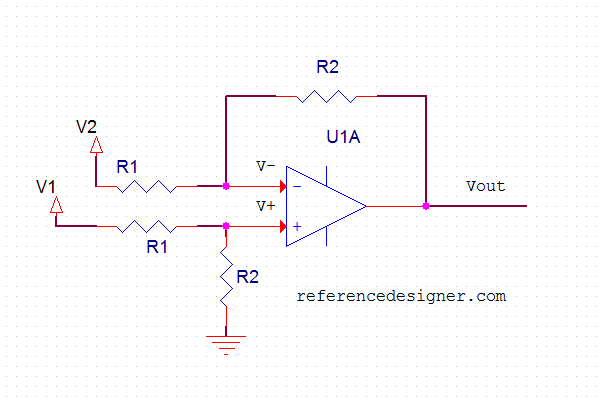Op Amp in Negative Feedback
Let us draw this circuit and start analyzing it.

The positive input of the Op AMP is fed by through a resistor devider by a voltage source V2. The negative input is different. It is fed by a voltage source V1 through aa resistor R1 AND it gets a feedback of the Output Vout through the resistor R2.
To analyze this circuit, we make an assumptions that the voltage at the positive and negative inputs of the OP AMP are approximately equal. In other words
V+ = V-
This assumption is derived from the fact that the the gain of the OP AMP is VERY LARGE. Let us say the output voltage is 6V. And the gain of the amplifier is 1 million. All we need is a difference of 6 micro volt between V+ and V- to get an output voltage of 6V. So the V+ and V- need to be really very small or almost equal.
We will be using this assumption in the analysis of almost all the OP AMP circuits. So keep it in your mind about this assumption.
We already know that there is no current going into the OP AMP inputs. We use this assumption to find the value of the V+ as
V+ = R2x V1 /( R1+R2)
Since V+ and V- are approximately equal we have
V- = R2x V1 /( R1+R2)
Next we will analyze the current at the negative node of the OP Amp. Take a look at the following circuit.

We already know that there is no current INTO the Op amp. And hence, the current i1 flowing into the resistor R1 is the same at the current i2 flowing into the resistor R2.
(V- - V2)/R1 = (Vout-V-)/R2